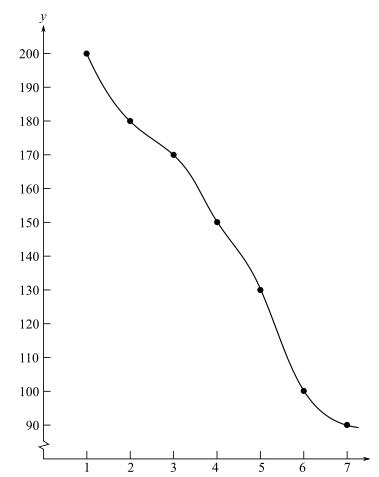
The estimation process for the demand for labor.
Explanation of Solution
The demand for labor is estimated using three variables, namely marginal product of labor
Two important assumptions that are made while deriving the demand for labor are, the firm functions in a competitive market and the labor market is also competitive in nature. Second, the ‘Law of diminishing returns’ prevails, which means that the marginal value of labor starts to fall as more and more workers are hired.
To determine the number of workers employed at different wage rates, firstly, derive the value of marginal product of labor
The table below displays different variables at different levels of output and workers.
A profit-maximizing firm chooses the optimal number of workers to hire by determining what the value of the marginal product would be at the given wage rate for every additional worker hired. The firm will demand the amount of labor where
If VMPL is higher than the existing wage rate at a particular number of workers, then the firm will have an incentive to hire an additional worker as the worker will be able to bring in more money for the firm than what they would have to pay. On the other hand, if
The demand for labor is determined by

Want to see more full solutions like this?
Chapter 11 Solutions
MyLab Economics with Pearson eText -- Access Card -- for Microeconomics

 Economics (MindTap Course List)EconomicsISBN:9781337617383Author:Roger A. ArnoldPublisher:Cengage Learning
Economics (MindTap Course List)EconomicsISBN:9781337617383Author:Roger A. ArnoldPublisher:Cengage Learning


 Principles of Economics 2eEconomicsISBN:9781947172364Author:Steven A. Greenlaw; David ShapiroPublisher:OpenStax
Principles of Economics 2eEconomicsISBN:9781947172364Author:Steven A. Greenlaw; David ShapiroPublisher:OpenStax





